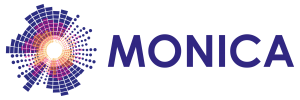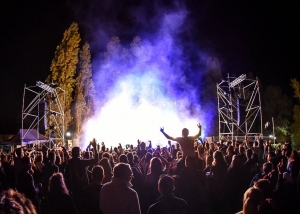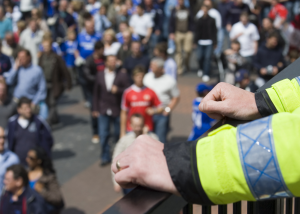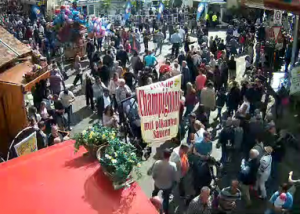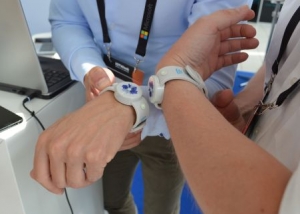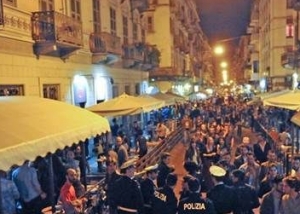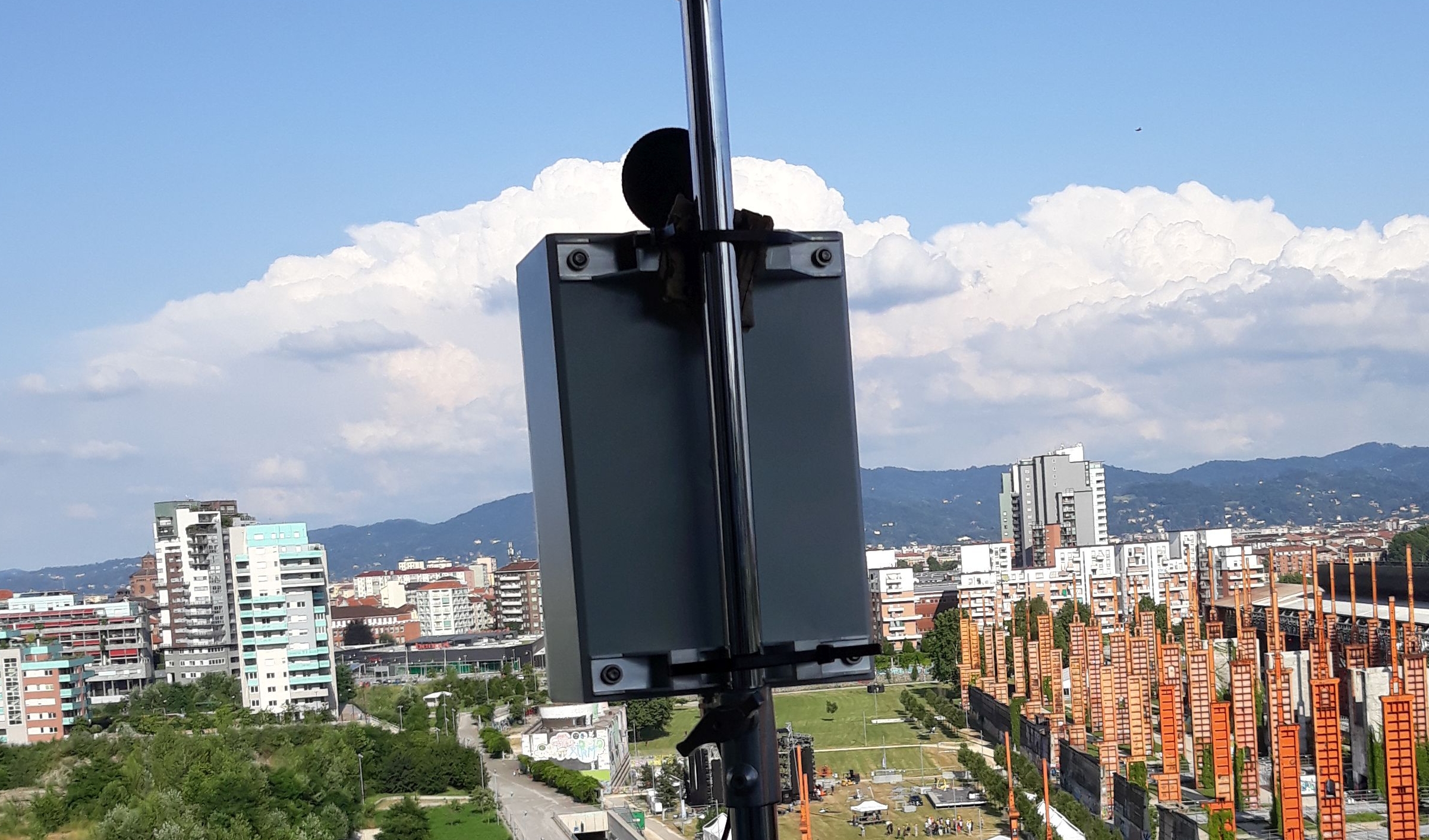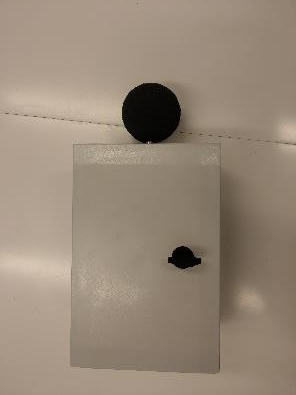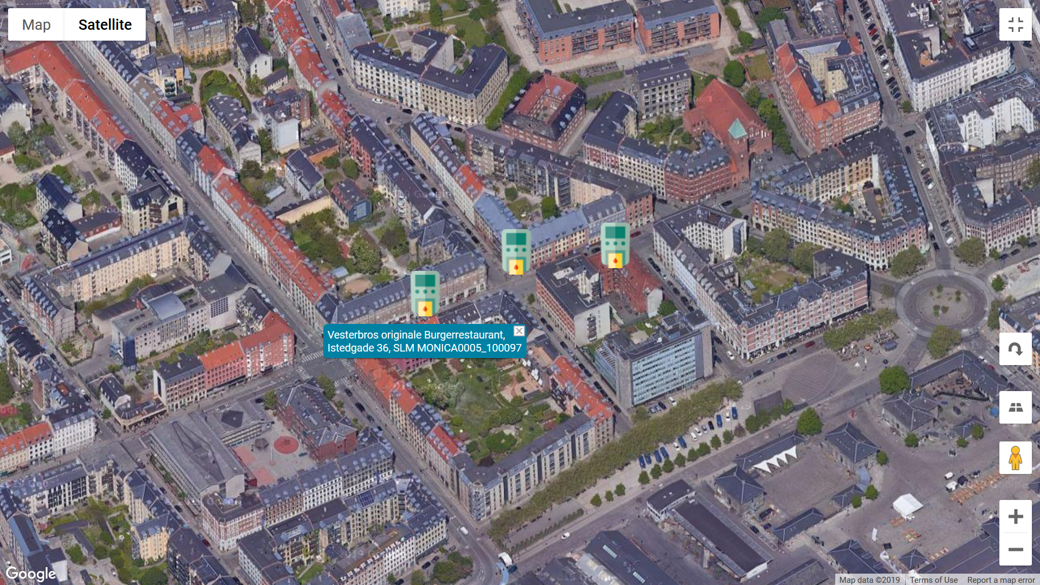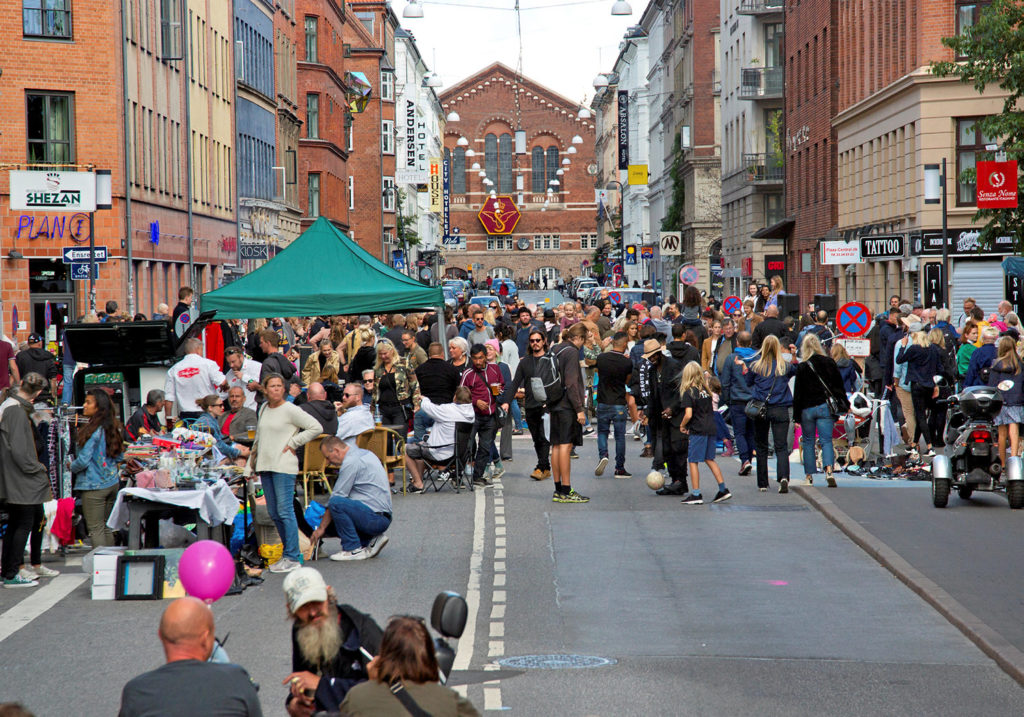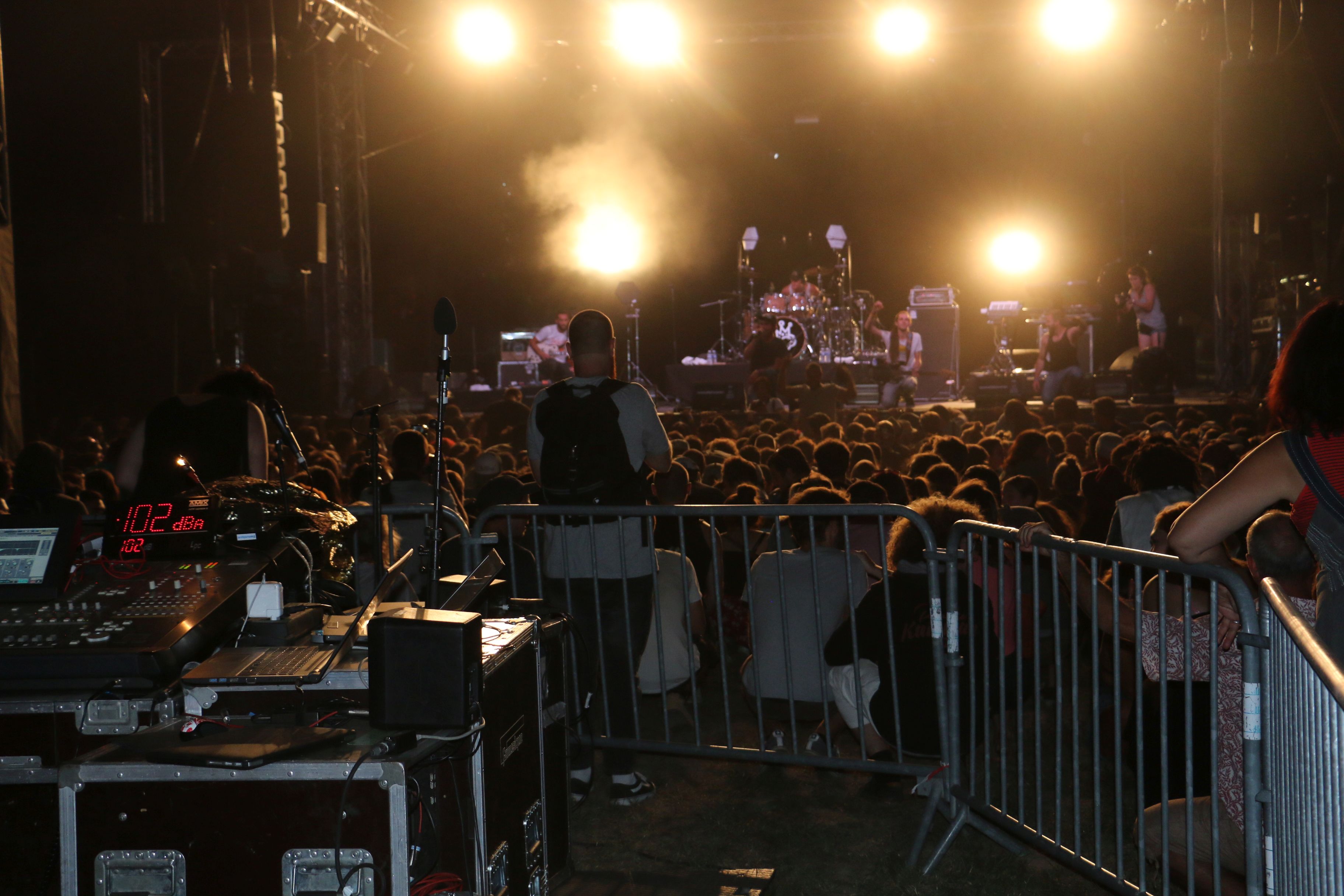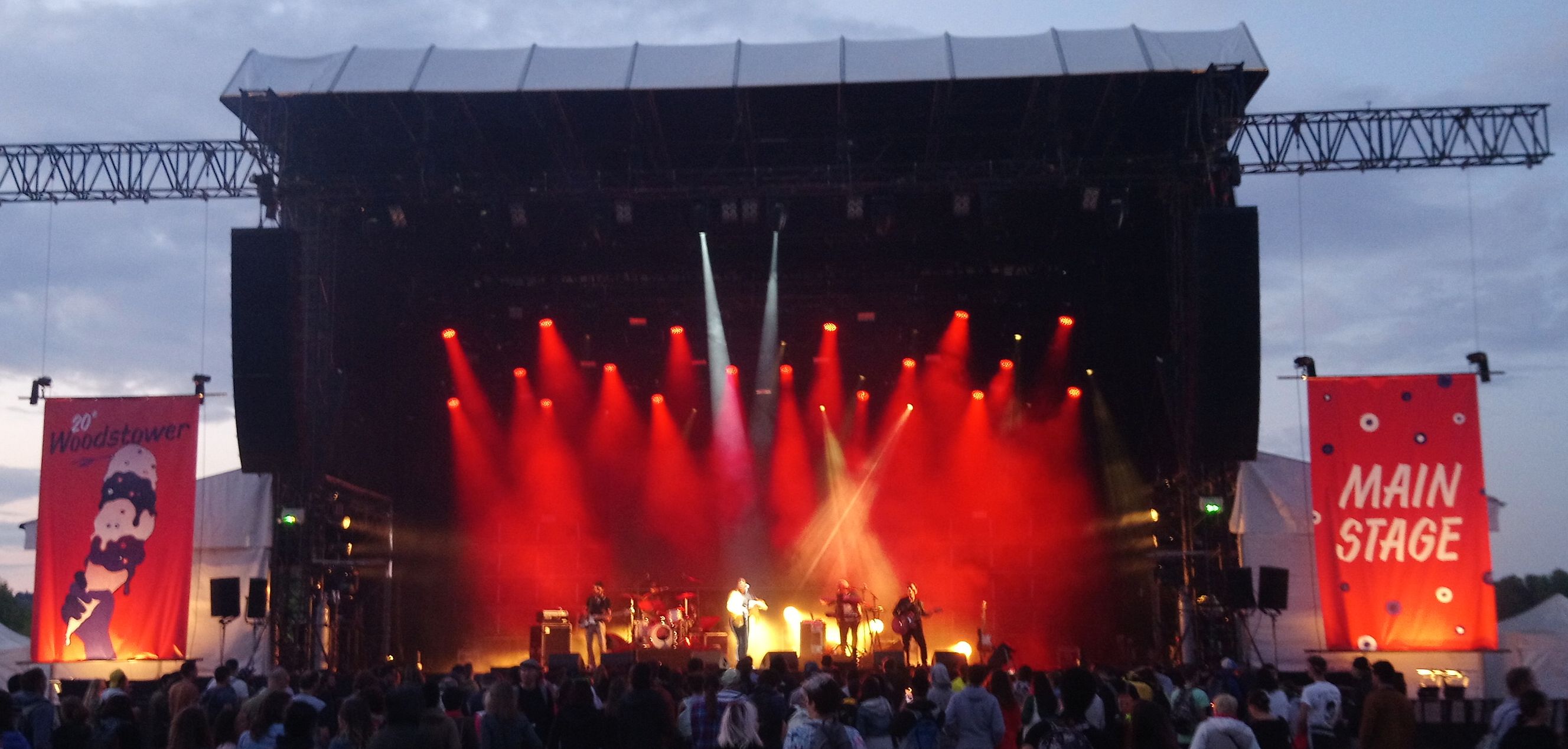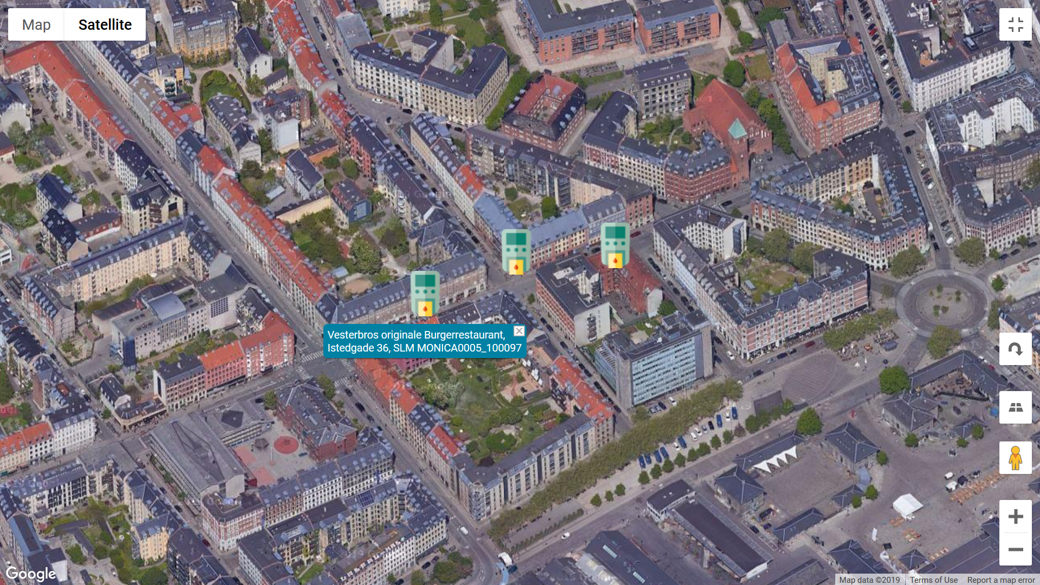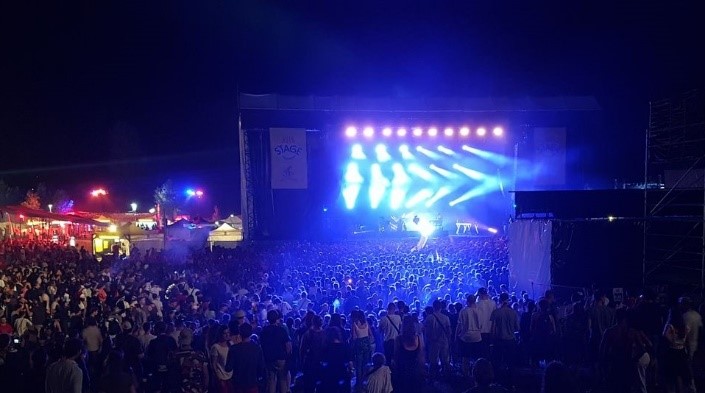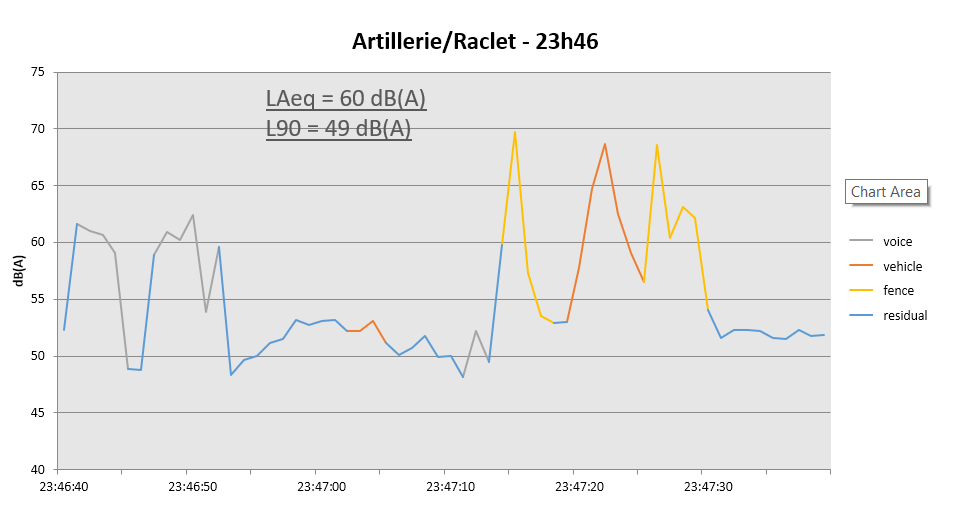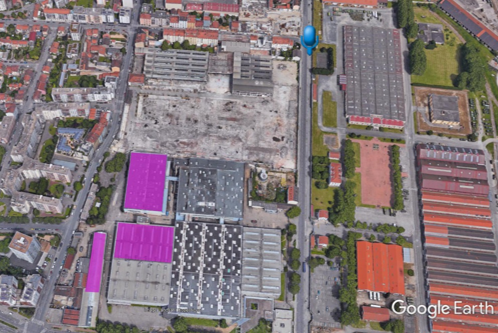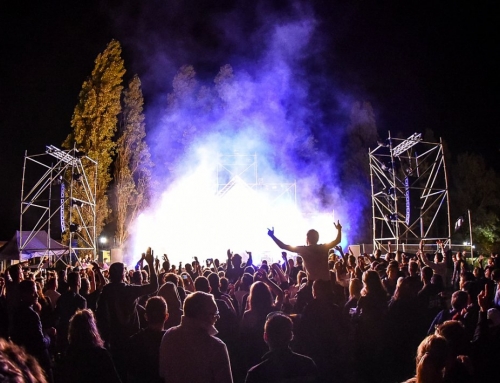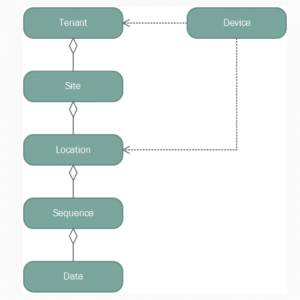Sound Level Monitoring
When assessing sound levels, for instance in public urban areas, it’s important that the measured sound levels are reliable, accurate and traceable. Therefore, it is required to use a type-approved, accredited and calibrated Sound Level Meter, which measures correctly under changing environmental conditions like temperature, humidity, and wind speed. Such installations are often bulky, complicated to install and difficult to collect real-time data from. The MONICA IoT Enabled Sound Level Meter is a practical, easy-to-use answer to this problem.
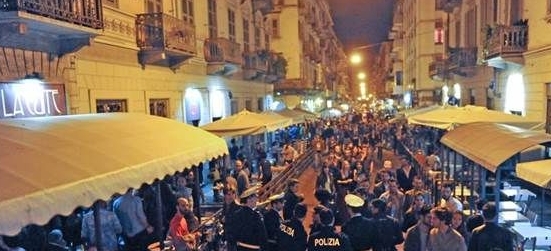
The MONICA IoT Sound Level Meter (SLM) solution provides real-time monitoring (measuring and displaying) of sound levels at discrete outdoor locations in the city. It is enabled for use in Internet of Things applications and is easy to deploy in the urban space. It collects data in real-time and sends them directly to backend databases. It can also perform real-time sound analysis so that sound contribution levels from different sources can be separated and pre-defined sound events can be detected.
The MONICA solution uses professional Brüel & Kjær IoT Sound Level Meters to measure instantaneous broadband sound levels (several acoustic parameters such as LAeq or LCeq), 5-minute average sound level (LAeq) and 1/3 octave spectrum. In addition, the SLM can provide GPS positioning and source contribution analysing. Data are exposed on a gateway and may be transmitted to cloud servers or the user’s proprietary servers or CMS (Content Management System) platforms.
This MONICA solution complements the MONICA Adaptive Sound Field Control solution. Combined they represent a total, closed loop sound monitoring and control solution for event and concert organisers during large open-air events. The solution also complements the MONICA Crowd and Capacity Monitoring solution where it is combined with crowd monitoring IoT devices. All together they provide a comprehensive solution for monitoring and managing sound and noise during large scale events.
Overview
| Application areas | Type of locations | Main features |
|---|---|---|
|
|
|
Challenges, Features and Benefits
Noise pollution poses a threat to both our health as well as the attractiveness of a city. Notable health issues that can be caused by noise pollution include stress, weakened mental acuity, and elevated blood pressure and heart rates. All major cities and larger urban areas have to cope with various sources of noise:
- Compliance of sound level ordinances for musical events, outdoor concerts in inner-cities
- Ad-hoc analysis of sound levels from street festivals and open-air markets in inhabited areas
- Sporting events compliance with area regulations and noise limits
- Restaurant and night-life areas respecting needs of neighbours
- Ad-hoc monitoring of streets and areas with heavy traffic for noise pollution monitoring
- Ad-hoc monitoring of temporary building and construction sites
Moreover, the city often has an interest in understanding the impact of sound in the city i.e. noise for neighbours during event set-up, during the event (music and crowd) and noise during decommissioning including noise from trucks and construction gears. The city may define noise level limits which external event or venue organisers must comply with in order to obtain the city’s permission to organise an event. In this case, it is important for both the city and the event organiser that the sound level can be measured accurately to verify compliance. For the city, keeping a good relationship with neighbours in the proximity of major events or restaurant areas is very important.
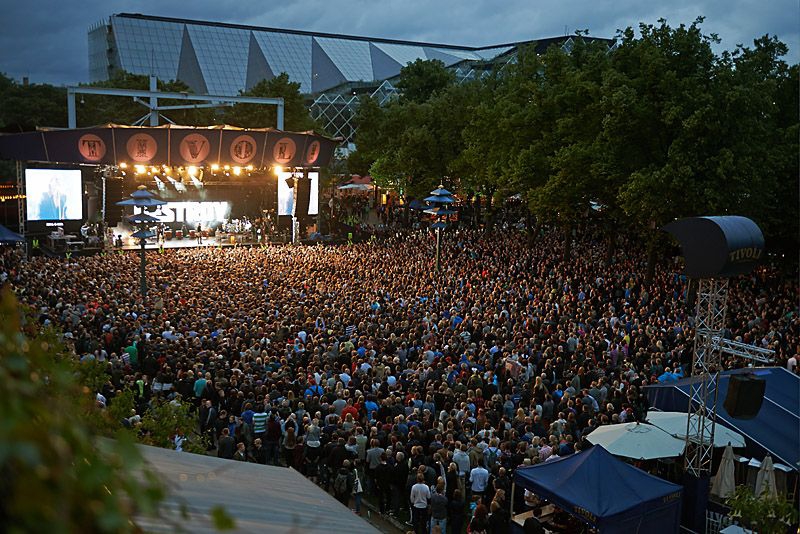
Tivoli Fredagsrock (Friday Rock) concert 2017
The MONICA Sound Level Monitoring solution provides a comprehensive tool for overcoming these challenges.
The MONICA IoT SLM can be used in any type of open- air, gated and non-gated event. It can be used for short term deployment (e.g. for a specific concert); for a recurrent event (monthly or seasonal) or for semi-permanent events (night life area, traffic).
The MONICA IoT SLM solution solves many of issues related to professional sound monitoring in cities:
- It is made to professional standards and may be used for compliance measurements
- It provides real-time monitoring
- It is light-weight and easy to install by electricians
- It can operate on WiFi or 3G/4G wireless internet
- It can operate on battery (up to 14 hours) and on permanent power (if available)
- It will measure a range of useful technical sound level parameters
The SLM Gateway contains processing capabilities, which enable services that uses input data from several Sound Level Meters and which can further reduce the data, before transferred to the MONICA Cloud. The SLM Gateway provides the following additional features:
- It may detect pre-defined sound patterns such as gun shots, screams, braking noise, etc.
- It exposes data for other applications through simple web services
- It may be interfaced to the city’s Open Data platform
Sound levels: Historical sound level parameters measured at the location of the Sound Level Meter(s) can be retrieved within a specified time interval. Intervals can be specified in steps of one second. The Sound Level Meter can measure basic acoustic parameters with up to two simultaneous frequency weightings (available weightings: A, B, C and Z). It can measure with up to three simultaneous time weightings (Fast, Slow and Impulsive) for the exponential averaging.
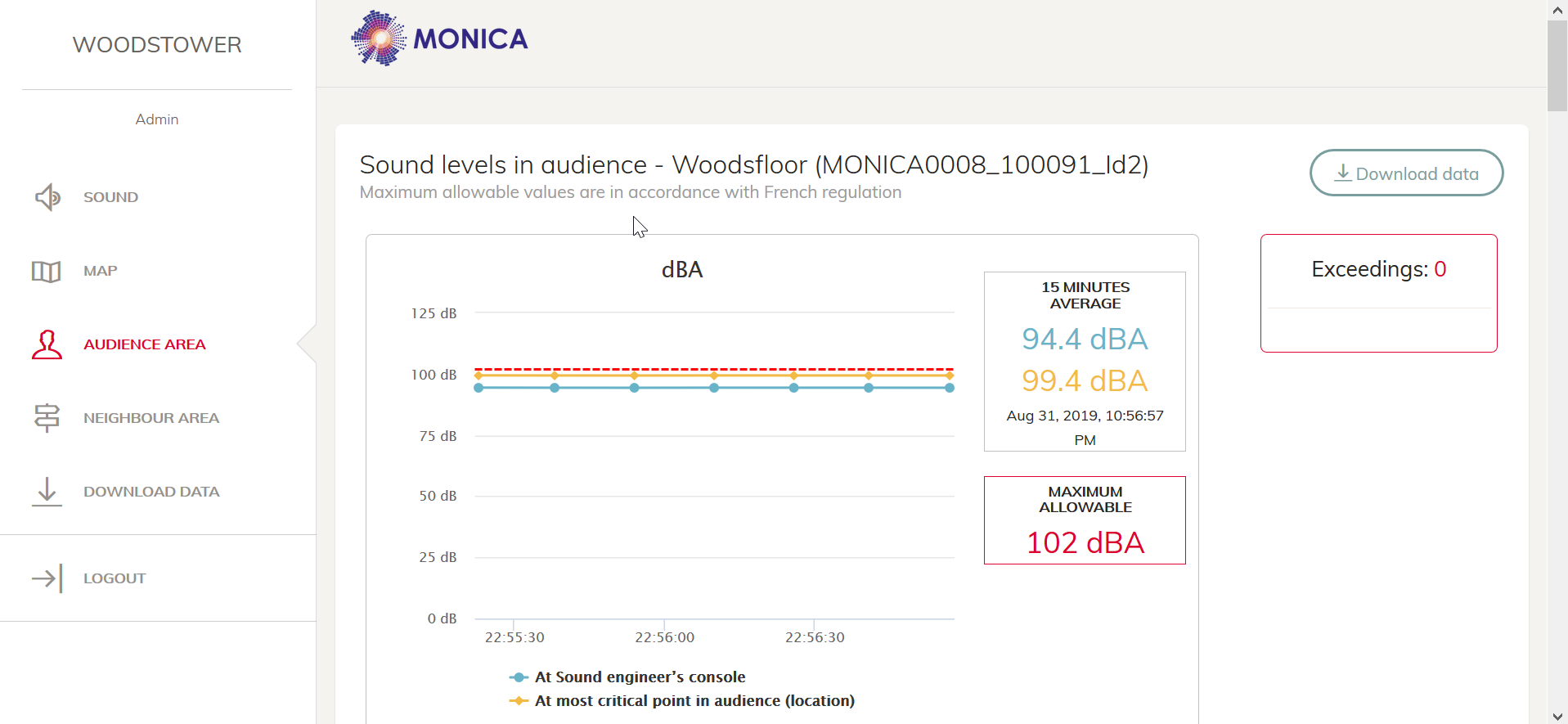
Assessing sound level regulation compliance during Woodstower 2019
Sound contribution analysis: Measuring the sound level in the vicinity of an outdoor event like a concert will also include the sound from other sources, like cars driving by. By placing one or more Sound Level Meters close to the concert, this service enables that the contribution from that concert can be separated at any other location where a Sound Level Meter is placed, and the sound level caused by the concert at that location estimated.
Sound heat map: A simple module has been developed using LAeq measurements of the MONICA IoT SLMs to compute a 2D map of noise density across a pre-defined area. The map covers the area of the venue and the surrounding neighbourhoods, giving an overview of the levels during the concert. The signal from the MONICA Adaptive Sound Field Control solution can also be combined to reflect its impact on the sound levels.
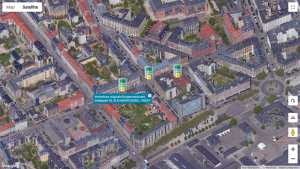
SLM places in Istedgade 2019 © In-JeT ApS
CAP data platform: A simple WordPress plugin has been developed so that data can be displayed on e.g. a city’s CAP (Collective Awareness Platform) or standard website. The plugin collects data obtained directly from one or more MONICA IoT SLMs and send to a CMS platform. The plugin displays the time series and the geographical location of each of the SLMs. The MONICA IoT SLM was demonstrated at the Copenhagen Municipality CAP during the replication event “Istedgade”.
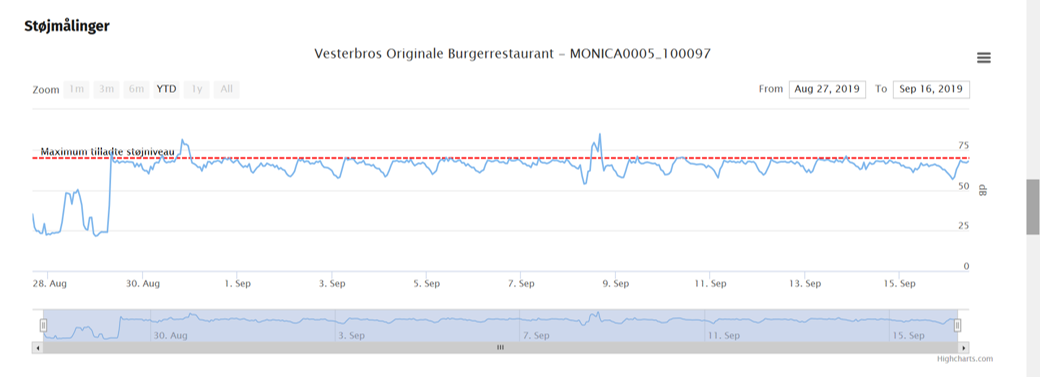
Measurements on the CAP in Istedgade from a MONICA IoT SLM © In-JeT ApS
When assessing sound levels in urban areas, it’s important that the measured sound levels are accurate to draw the right conclusions. If a venue is under a sound level regulation, authorities must make sure that measured sound levels are accurate before approaching the venue organizers. For that purpose, it is necessary to use a type-approved Sound Level Meter, which is calibrated, and which measures correctly under changing environmental conditions like temperature, humidity and wind speed.
The MONICA IoT SLM solutions help to establish the sound map of an event from three perspectives: regulation (confirm adherence to established noise limits), objective contribution (define noise sources and their contribution) and information (inform about sound levels and analyse components of sound).
- The benefits for Smart City Operators are: being able to monitoring noise in various spots in the city will enable municipalities and Smart City Operators to get precise information about street noise. By clustering the sound levels with crowd data, they can identify patterns on which to act upon and build new strategies of crowd management.
- The benefits for event organisers are: being able to estimate the impact of sound emissions in audience and neighbour areas, and to better manage complaints from the neighbours.
Performing processional sound level monitoring is often a complicated issue involving bulky and expensive professional equipment and highly skilled professional staff to install and interpret the measurements. This task is made easy with affordable, easy to arrange professional MONICA IoT Sound Level Meters and data can easily be send to monitoring platforms (like the MONICA COP), to own databases or CMS (like the MONICA CAP) or to the Smart City’s Open Data platform.
Technologies
The basic components in MONICA Sound Level Monitoring solution are the Sound Level Meters, which measure sound levels and record sound. Collected data are transmitted to a SLM Gateway which takes care of local buffering, and data analysis/reduction. Data can be pulled from the SLM Gateway to the MONICA cloud or directly to an external cloud-based application, for example an organisation’s CMS. The concept is illustrated in the figure below:
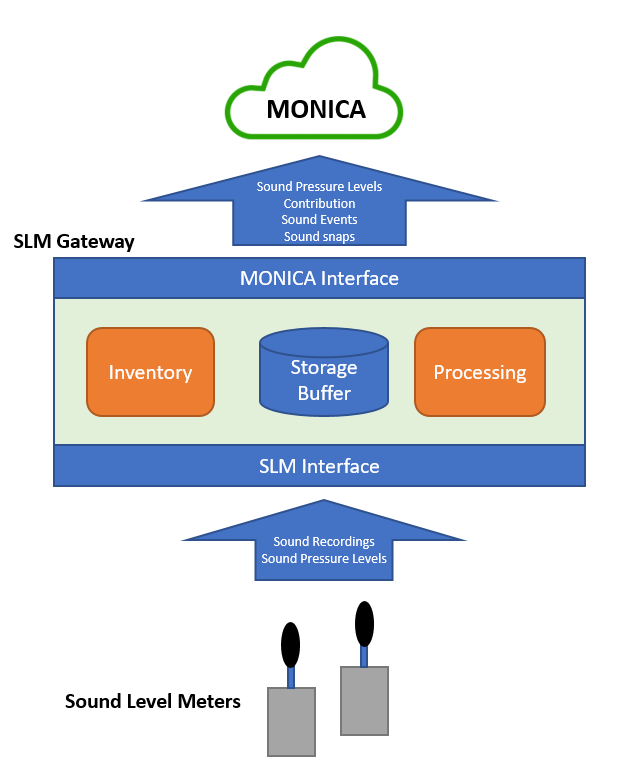
IoT Enabled Sound Level Monitor Concept © B&K
The Sound Level Meter box contains 3 elements:
- The Sound Level Meter device itself which includes the microphone
- A mobile phone, which in this first version will take care of the communication between the Sound Level Meter and the SLM Gateway.
- A Power Bank which will supply both the Sound Level Meter device and the mobile phone enabling at least 8 hours of battery operation. Main power can be supplied for longer operational time.
Sound Level Meter: The Sound Level Meter is by itself an autonomous device, which do not depend on an infrastructure. It will record the sound; do the data analysis and data reduction and transfer the results to the SLM Gateway. The Sound Level Meter incorporate a GPS Receiver which enables information of the location of the Sound Level Meter to be read, but also to time stamp data from the Sound Level Meter, which enable time alignment of data from several devices.
For developers:
🛠 The IoT SLM Gateway
💻 Sound Heat Map
SLM Gateway: Since the data collected from the Sound Level Meters are very high, a data reduction must be performed, which is done in the SLM Gateway. The Sound Level Meter will automatically connect to the SLM Gateway when either WiFi or 3G/4G networks are available. The needed bandwidth depends on the mode of operation. Most demanding scenarios are those which require sound recording (around 2 Mbit/sec). The compressed data are streamed to the owner’s cloud server.
Sound Heat Map: The Sound Heat Map uses LAeq measurements to give an estimate of the sound pressure level (SPL) at other positions than the one being measured by the Sound Level Meter. This is done using the forward sound propagation model developed in the project, based on the existing sound propagation model Nord2000.
Sound contribution analysis: A source contribution algorithm prototype was developed in the project and tested during Tivoli Friday Rock 2017. It processed data with the transmissibility approach and the contribution of concert activities in neighbouring areas shows a clearer picture on the noise impact of concert activities. The algorithm was also validated in a laboratory environment where the true contribution is known. Labelling of audio recordings in Tivoli is has been performed for an improved contribution analysis based on machine learning techniques.
Event detection: Sound event detection algorithms can be developed to identify pre-defined sound events in real-time and publish a message from the cloud server. The security and control room staff can subscribe to these messages.
The MONICA IoT SLM will automatically start streaming the type of data which they are configured for to the SLM Gateway. The data will go to storage and potentially processing if configured. Communication from the MONICA IoT SLM to the MONICA cloud is provided by using a RESTful API. The data model contains elements that allows user to build a hierarchy of devices within an organisation based on locations and directly address each device within the hierarchy. Uses can then extract various types of data sequences (e.g. Leq or octaves) with date-time stamps and GPS. The SLM Gateway also maintains an inventory of available devices and their physical and logical (sites) locations.
.
The MONICA IoT SLM is a relatively complex solution that relies on both external components and technologies and technologies, enablers and tools from the MONICA project partners. Please contact the responsible partner listed below for more information.
External technologies required
- Commercial Brüel & Kjaer Sound Level Meters.
- A stable WiFi or 3G/4G network is required to avoid data loss and a high bandwidth for advanced functionalities requiring audio recording such as source contribution identification. For one SLM, the required data rate is between 200 b/s and 2 Mb/s depending on the configuration.
Internal MONICA enablers and tools required
- Brüel & Kjaer SLM Gateway platform.
- MONICA Platform Core Enabler
- Sound Control Enabler
- Sound Monitoring Enabler
Scalability
- The MONICA IoT SLM system is scalable in terms of data types. It can handle several data streams simultaneously: base values, spectra and audio.
- The MONICA IoT SLM refresh rate is sufficiently high to allow the technical operator to react fast, in case an issue is detected (music too loud, noise levels exceeded, event detected).
- Data transfer and storage are only limited by the capacity of the organisations network connections and the capacity of its servers.
- The MONICA IoT platform has been demonstrated with integration of a maximum up to 10 SLMs retrieving sound measurements (e.g. LAeq, LCeq and spectrum data) from the SLM Gateway periodically every 15 seconds. In these pilot scenarios, the IoT platform has been performed smoothly without any delay and interruption. Potentially, a larger number of SLMs could be integrated, for instance, by increasing the periodicity of the sound data retrieval.
Associated MONICA solutions
The MONICA IoT SLM is closely related to and have been demonstrated together with these additional MONICA solutions:
- MONICA Adaptive Sound Field Control
- MONICA Crowd and Capacity Monitoring
- MONICA Crowd Management and Communication (including cloud server and COP)
- Collective Awareness Platform
- Noise Maps using Electrical Bikes Sensors
The MONICA IoT SLM can also be implemented as a customer specific solution independent of other MONICA solutions.
Implementation
Preparation
The following information must be investigated and prepared before implementation is commenced:
- Possible positions for mounting the MONICA IoT SLM should be identified and carefully investigated in terms of sound monitoring topography, expected performance, reflections, background noise, accessibility, aesthetic considerations, safety, etc.
- The need for permissions for installation and connections must be identified, from whom permissions shall be obtained, and the conditions and procedures for obtaining the permissions. This can be a lengthy process (private properties, access rights, etc.)
- The MONICA IoT SLM uses 230V AC for continuous operation. The right power plugs and adapters should be assessed depending on the type of power available onsite.
- For shorter term use and when no power is available, the battery power pack can be used, but the lifetime should be considered. The MONICA IoT SLM will have 14 hours of battery operation.
- A stable WiFi or 3G/4G network is required. If 3G/4G is preferred, a local SIM card is needed for each Sound Level Meter.
- MONICA IoT SLMs have a local storage in order to avoid any data loss, since mobile network transmission is sometimes unreliable (e.g. a large number of cell phones during an event is causing network traffic congestion).
Deployment
The solution can be deployed freely to any locations. See Preparation section above for limitations.
Operation
The devices can be operated unattended but need to be secured from unexpected touches/operations done by visitors. The noise information provided by the system will be delivered as decision support to authorities as well as event sound engineers, depending on the option.
Reproducibility means that a MONICA solution (including data sets, software code, etc) can be made available to others for reproducing the same results.
The MONICA Sound Level Monitoring solution can be fully reproduced by using the Sound Monitoring Toolbox. This Toolbox allows the user to demonstrate the Sound Monitoring use case by instantiating and running the involved MONICA components.
The Replayer tool will be used to replay part sound data from the Woodstower festival (August 2019). Since the database is very large, for the demonstration of the toolbox only a small portion of it has been made available. The Toolbox includes also the Decision Support System (DSS) module for generating the alerts and the MONICA Common Operational Picture (COP) for visualization purposes.
Additional resources:
The MONICA Sound Monitoring Toolbox:
Technical regulations
- The analysis in the MONICA IoT Sound Level Meter conforms to the international standard IEC 61672-1 (Class 1) and has implemented frequency and time weightings as specified in the standard.
- The MONICA IoT Sound Level Meter conforms to the international standard IEC 61260-1 and has implemented 1/1-octave and 1/3-octave frequency analyses as specified in the standard.
- Sound Level Meters and Gateways comply with the Radio Equipment Directive 2014/53/EU (RED).
- Authentication for data transfer is enabled using OAuth 2.0, the industry standard protocol for authorization.
- The hardware must comply with the Waste Electrical and Electronic Equipment Directive (WEEE 2012/19/EU).
- The hardware must be marked with the WEEE mark.
- The hardware contains electronic equipment and the supplier and the organiser must agree on the proper take-back procedure for the used hardware.
- The hardware must comply with the Restriction of Hazardous Substances in Electrical and Electronic Equipment Directive (RoHS 2011/65/EU).
Other local/national regulations
- The use of the SLM that only measures sound pressure levels is handling personal data. However, each implementation should be analysed against the GDPR requirements.
Ethics
- The MONICA IoT SLMs may pick up conversation and although this is not the purpose of the solution, it is advisable to post signs informing the public that sound data is being collected. The signs should be placed by the SLMs and be clearly visible and containing operator/contact information (similar to how to CCTV is marked be signs).
- The solution may raise concerns about increased surveillance practices and how these affect citizens’ rights to privacy, particularly if also CCTVs are in operation enabling audio to be coupled with video.
- The solution may reveal facts about actual sound levels which may require the city to inform citizens hereof and take action.
Lessons Learned has been collected throughout the deployment and demonstration phases of the MONICA project and the relevant Lessons Learned are provided here for reference. Please note, that a number of the experienced issues have been corrected in the final MONICA products so please check with the responsible partner for the newest updates.
The following main Lessons Learned from the MONICA demonstrations and reference deployments are:
- Remote configuration for SLMs is useful for managing the MONICA IoT SLM and should be supported.
- Hardware (sensors, computers etc.) needs to be installed in advance: at least a few days before the pilot demonstration in order to check if everything is working correctly (network, power supply, data transmission etc.) and perform preliminary measurement if needed.
- For configurations which requires high data rate transmission, a high bandwidth 4G network is important.
Replication
Business Models
The Business Model Canvas is used to give a high-level overview of the contents in the value configuration and in the customer group side related to a specific value proposition. This tool is used to map out all details of the MONICA business models based on the value proposition, target groups, the partner constellations, and revenue models outlined below.
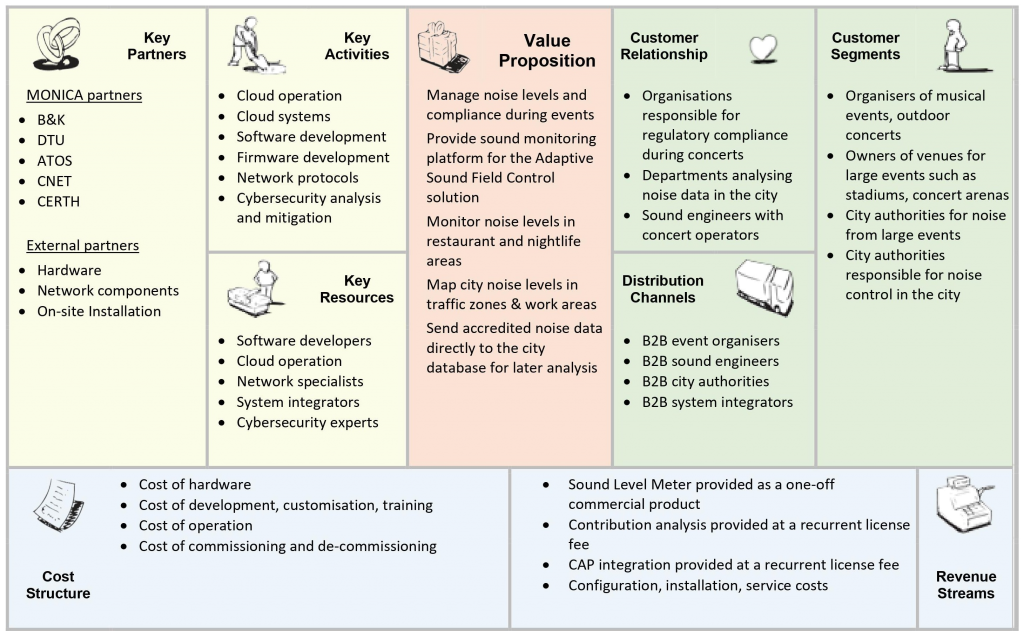
Business Model Canvas for the MONICA Sound Level Monitoring solution © In-JeT ApS
Revenue models
The choice of revenue model and pricing scheme is entirely up to the partner that have commercialised the solutions. Hence, the following information is solely provided as a guide to the expected business conditions that the solutions might be provided at. Please contact the responsible partner for further, up-to-date details.
| Components | Type | Anticipated revenue model |
|---|---|---|
| IoT SLM and SLM Gateway | Hardware, Service | SLM: Provided as a one-off commercial product Gateway: Provided as a one-off service fee |
| Contribution Analysis | Algorithm | May be provided at a recurrent license fee, but not decided at the time of writing |
| Noise Heat Map | Service | May be provided as a recurrent cloud service fee, but not decided at the time of writing |
| CAP Data Platform | Hardware, Service | SLM: Provided as a one-off commercial product
WP plugin: Provided at a recurrent license fee |
Reference deployments in MONICA
During the project period 2017 – 2020, the MONICA Sound Level Monitoring solution was deployed and tested in real-life situations during planned pilot events. Validated results from these reference implementations can be found in D9.2 Final Assessment and Validation Report of the MONICA IoT Platform. Follow the links below to read articles about the demonstrations.
| MONICA demonstration events | |
|---|---|
| Ville de Lyon |
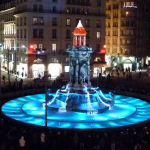 Fête des Lumières 18 |
| Città di Torino |
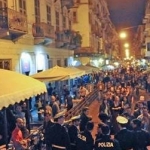 San Salvario  Kappa FuturFestival 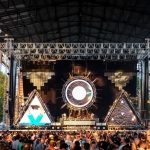 Kappa FuturFestival |
For more information, please see the contact list below
Replicators
During the project, the MONICA Sound Level Monitoring solution was deployed and tested in real-life situations in events outside the planned MONICA demonstrations. These events were suggested by external partners due to their interest in the MONICA solutions. Please contact the organisers for further information.
| MONICA Replication events | |
|---|---|
| Copenhagen |
 Gadefest Istedgade |
| Lyon |
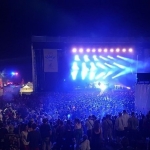 Woodstower 2019 |
The following partners are responsible for various components of the MONICA IoT SLM solution:
| Solution | Responsible | Acronym | Details |
|---|---|---|---|
| IoT enabled SLM and SLM Gateway | Brüel & Kjær | B&K | The Sound Level Meter described in this material is today a commercial product and can be purchased at Brüel & Kjær. The rest of the solution is at prototype level and may never be released as commercial products or in a different form than is described here. |
| Contribution Analysis | Brüel & Kjær | B&K | B&K provides algorithms for the analysis and sound event detection. Types of events may be customised. |
| Noise Heat Map | Technical University of Denmark | DTU | DTU provides algorithms for calculating the Sound Heat Map. This requires the MONICA Cloud solution. |
| CAP Data Platform | In-JeT ApS | IN-JET | IN-JET provides integration to CAP or website based on WordPress. A data repository with readings from the SLM Gateway and a WP plugin to display the data is available. |
